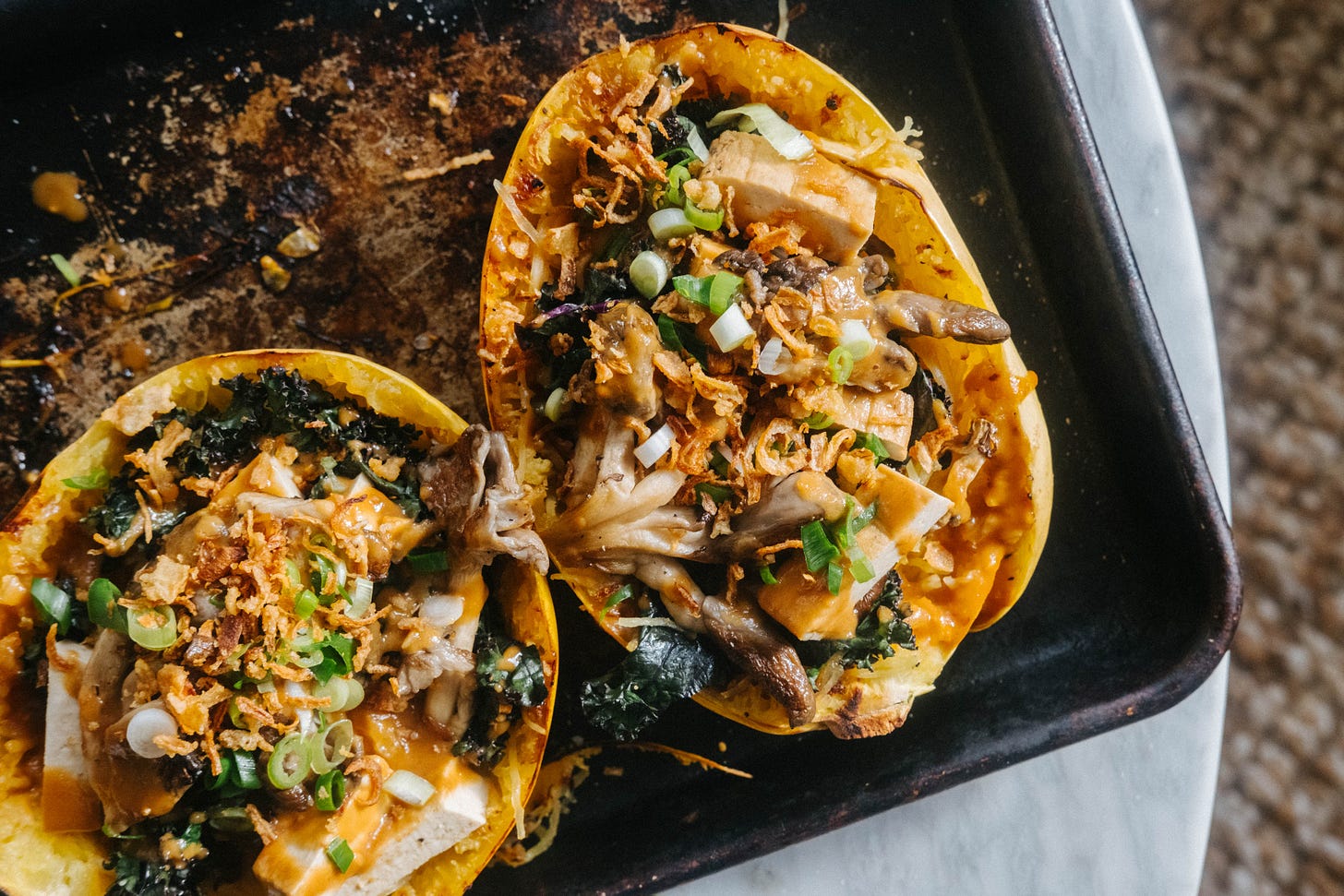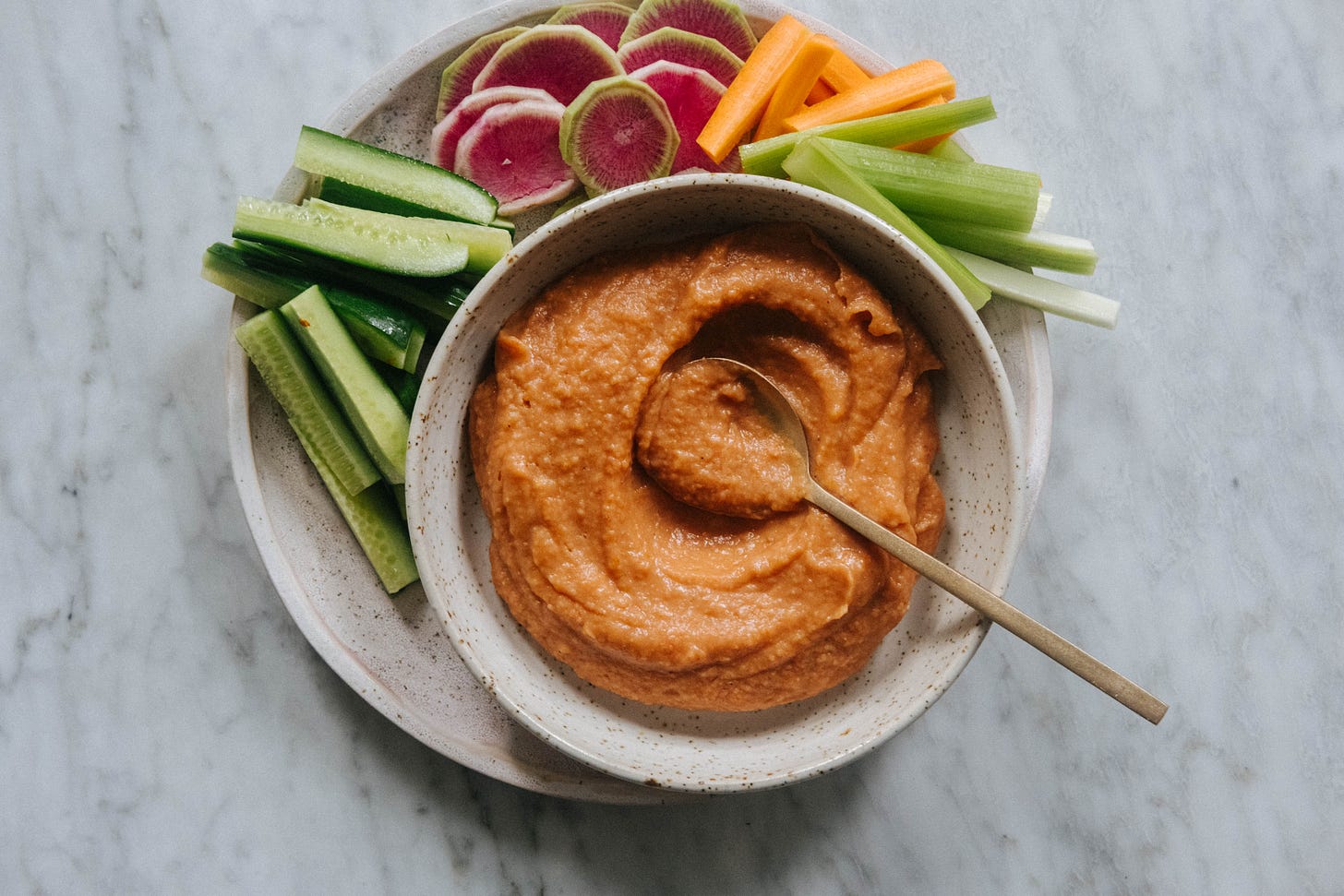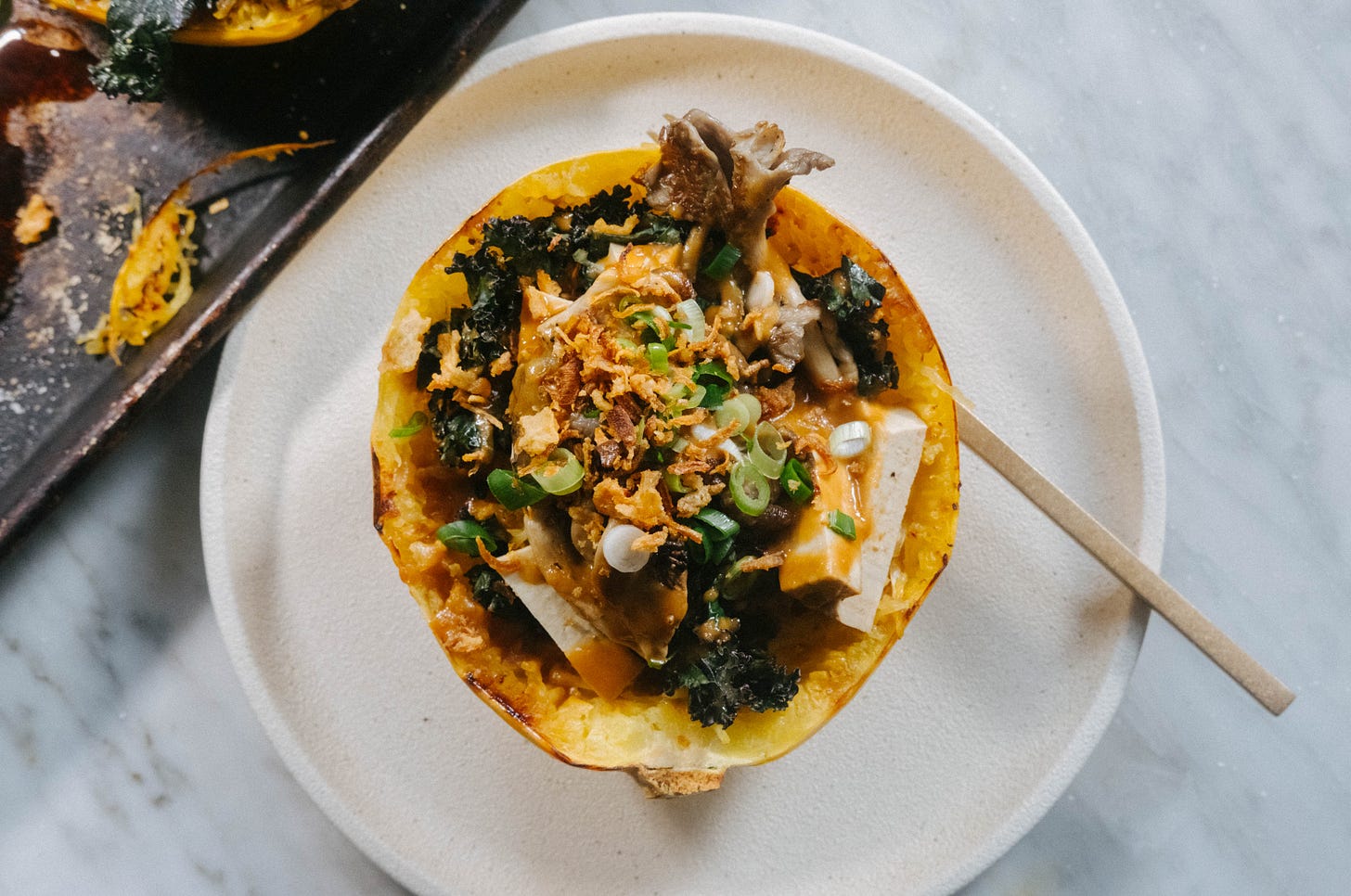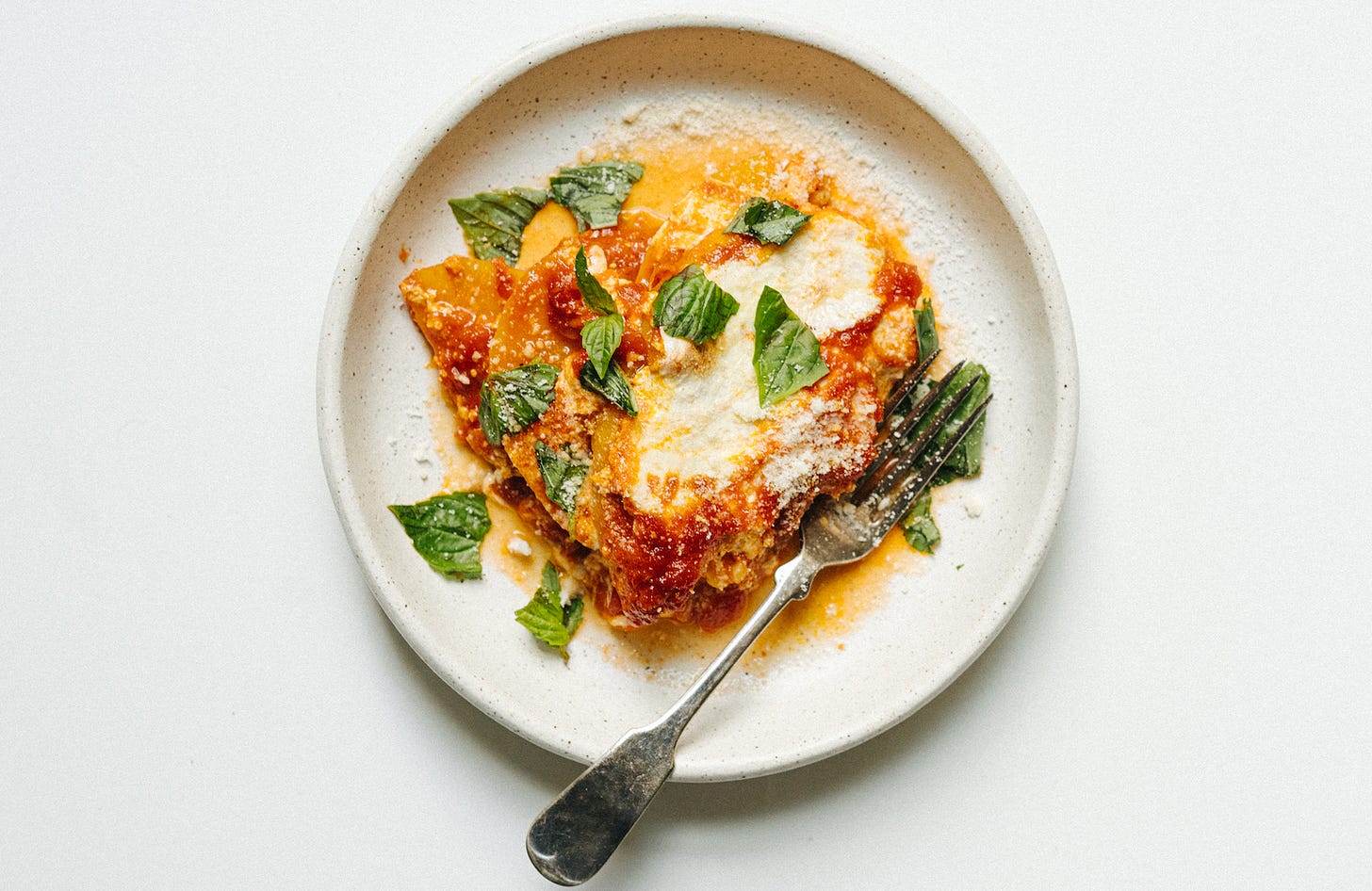Welcome to To Vegetables, With Love, a celebration of a vegetable life, less ordinary.
Click here to see your subscription options. As always, I appreciate all of you being here!
If you’re looking for a newsletter recipe, see my Substack recipe archive here. For recipes with a 🔒 symbol, you will need a paid subscription. Everything else is free.
🥦 My cookbook, Tenderheart is for cooking vegetables, all year round. Pick up your copy here. It is also mostly vegan (or vegan-izable) and gluten-free adaptable.
🙏🏼 A reminder that if you love 💚 Tenderheart, leave it a review on Amazon (whether you purchased it there or not).
This one goes out to all the squash I love.
Winter squash season is in full swing in New York City, so I’m leaning in. While the name ‘pumpkin’ is all encompassing category in Australia, the US offers an array of ‘winter squash’ that vary in flavour and texture. In New York, the markets are currently brimming with varieties like sugary honey nut (my absolute favourite, a squat squash that is a hybrid of butternut and buttercup squash), buttery koginut (a hybrid of kabocha squash and butternut squash), nutty acorn squash), tear-drop shaped red kuri squash, tender delicata, creamy kabocha, and many more. This week, I feature a new recipe using spaghetti squash, along with a not-new winter squash/pumpkin recipe, which I thought you may enjoy over this holiday season - the butternut squash ‘lasagna’ from Tenderheart.
At the supermarket checkout this week, a lovely lady named Elizabeth and I got chatting. She shared how she was having a dinner party this week and was going to cook a few recipes by the great Marcella Hazan. I told her about my favourite Marcella recipe (which is probably yours too). Then she saw my spaghetti squash and commented, I cooked one once, I didn’t like it.
I could see where Elizabeth was coming from. Spaghetti squash isn’t always great. I’ve also made it before and not enjoyed it. It’s bland and holds a lot of liquid. I told Elizabeth, it needs strong seasoning, I think I’m going to serve it with a spicy peanut sauce. So here we are.
Spaghetti squash is one of the wonders of the cucurbitis, or gourd, family. Its oblong, cylindrical shape is unremarkable, but when cooked, its flesh separates into long, translucent strings that resemble pasta or noodles. The texture of the squash is tender with a slight crunch and offers a very mild flavor.
Despite being around since the 1930s, it was during the late 20th century when, according to Atlas Obscura, spaghetti squash began being marketed to a calorie-conscious public. The long strands were being pushed as a healthier alternative to noodles or pasta, not unlike the rise of “zoodles” (zucchini noodles) in the past decade or two. The problem with this positioning of plant noodles is that you are working with a product with little inbuilt flavor, so coupled with common low calorie preparations, they are often rendered rather tasteless or unsatisfying.
This could be why my mind immediately went to peanut sauce to bring spaghetti squash out of its doldrums. It’s a reliably rich option, with deep nutty notes, and lots of complexity. It is my long held belief that peanut sauce makes everything taste better. This recipe once again proves this theory correct.
For this recipe, I wanted to serve the “spaghetti” strands in the squash shell, and load it up with many delicious things. I chose kale, mushrooms and tofu to hammer home heartiness. After scraping the strands away from the bottom and sides of the squash, treat them as you would any ingredient and season them – a little salt and black pepper goes a long way. I go the extra mile and add some of the peanut sauce to the strands, tossing it through before adding the toppings. This makes a huge difference to this dish.
Because I’m me, I always worry that you, the reader, won’t be able to get hold of spaghetti squash (it is in season right now in NYC). So here are some alternative ways to serve this dish:
Roast honeynut, acorn or butternut squash in the same way, increasing or decreasing cooking time depending upon the size (meaning, cut them in half, season, and roast them cut side down). If your squash is a similar weight to the spaghetti squash in my recipe (about 800g / 1 ¾ pounds), about 30-40 minutes should do it. Simply press the skin of your squash with your finger and if it gives in easily, it’s ready. Once tender, rough up the flesh of your squash with a fork and then layer in the ingredients in the same way. The flesh will not be strands, but more like a mash.
Stuff a whole baked potato or sweet potato! Pretty much same theory as above but with a large starchy potato (such as russet).
You could slice thick “steaks” from a cauliflower, drizzle with olive oil, season with sea salt and black pepper and then roast them at 400˚F / 200˚C for 25–30 minutes, until the cauliflower steaks are golden on the outside and tender on the inside. Pile the kale, mushrooms and tofu and peanut sauce on top.
Simply take rice noodles, rice or even sticky rice, and top with the the kale, mushrooms and tofu and peanut sauce.
This week
Eat DIP FOR DINNER! My white bean and sundried tomato dip is pantry friendly and hearty, a great base for roasted veggies, a robust spread for a thick piece of toasted sourdough and more more applications. When the inspiration to cook is low, centre a meal around a dip, serving with nice bread, cheese, pickles, and other store-bought goodies. It’s also a nice addition to a holiday table!
Listen to this lovely chat I had with Lilah Raptopoulos on Life and Art on FT Weekends and this Thanksgiving chat with Evan Kleiman and
on KCRW Good Food, where I shared my favourite holiday dish, Hasselback Potato Gratin with hazelnut cream (recipe is in Tenderheart) - it’s vegan and so damn good. I can’t wait to make it this week.Watch some Thanksgiving folly on The Today Show which involved a tractor and Martha Stewart with a rake. I shared one of my favourite Thanksgiving table decorating tip, gave some festive table tips and also made my gluten free flourless soy sauce brownies from To Asia, With Love.
Spaghetti squash with tofu, mushrooms and sweet peanut sauce
© by Hetty Lui McKinnon for To Vegetables, With Love
Serves 2
1 medium (about 800g / 1 ¾ pounds) spaghetti squash (see headnotes for substitution)
extra virgin olive oil
sea salt and black pepper
1 bunch kale, leaves removed
225g (8 ounces) mushrooms such as oyster, torn or sliced
200g baked tofu (store bought), sliced into strips
2 scallions, trimmed and finely sliced
handful of crispy fried onions/shallots
Sweet peanut sauce
90 g (1/3 cup) smooth peanut butter
80ml (1/3 cup) just-boiled water, or more to loosen
1 garlic clove, finely chopped or grated
½ teaspoon red chilli flakes
1 1/2 tablespoons kecap manis (or 1 tablespoon soy sauce with 1 teaspoon sugar)
1/2 teaspoon sea salt
Preheat oven to 400˚F / 200˚C.
Using a sharp knife, cut the spaghetti squash in half lengthwise (through the stalk). Drizzle the cut side with a little olive oil and season with a little sea salt and black pepper. Turn the squash over and poke a few holes into the skin using a fork (this allows for even cooking). Bake until the skin is lightly browned on the outside and a fork inserts easily into the skin and flesh, about 30-40 minutes (it is okay if it is still a bit firm; the time will vary depending on the size of your squash).
Meanwhile, heat a skillet (frying pan) on medium high heat. Add a drizzle of olive oil and the kale, and season with a little sea salt and black pepper. Cook, turning every now and then, until the leaves are wilted and started to get crispy, about 3-4 minutes. Remove from the pan and set aside.
In the same pan, add a little more olive oil, along with the mushrooms. Season with a touch of salt and black pepper and leave to cook, undisturbed until golden, about 2-3 minutes. Flip them over and cook the other side.
To make peanut sauce, combine the peanut butter, garlic, red pepper (chili) flakes, kecap manis and salt in a small bowl and slowly whisk in the hot water. If the mixture separates, whisk in a touch more water which will bring it back together.
Remove the spaghetti squash from the oven and flip it over so it’s cut side up. Using a fork, scrape the flesh to loosen the strands from the bottom and sides. Season the strands with a touch of salt and black pepper and add 1-2 tablespoons of the peanut sauce. Toss the squash to coat with the sauce. Top the squash spaghetti with kale, tofu, mushrooms and then drizzle over more of the peanut sauce. Top with scallions and crispy fried onions/shallots.
BONUS RECIPE: FROM TENDERHEART
Butternut Squash ‘Lasagna’
From "Tenderheart: A Cookbook About Vegetables and Unbreakable Family Bonds" © 2023 by Hetty McKinnon. Excerpted by permission of Alfred A. Knopf, a division of Penguin Random House LLC. All rights reserved. No part of this excerpt may be reproduced or reprinted without permission in writing from the publisher.
I love the reimagination of a dish or an ingredient, and this recipe does both. Inspired by the classic flavors and fastidious construction of lasagna, I’ve replaced the pasta sheets with thin slices of butternut squash. This substitution is not a gimmick, nor is it due to a dislike of the unparalleled original, but is driven purely by curiosity and a desire to unlock the sweet, salty, earthy possibilities of butternut. The squash is roasted first, to help release the natural sugars in the flesh, and is then combined with a tangy, subtly spiced tomato sauce and creamy ricotta and mozzarella, which takes this sweet marrow far into the savory side. There are many ways to customize this recipe: add some pesto between the layers; dot with black olives or capers; slip some chickpeas in for extra heartiness; or include some wilted spinach or kale to create an even taller stack.
Serves 4–6
1 butternut squash (about 1.3 kg / 2 pounds 13 ounces), peeled
extra-virgin olive oil
sea salt and black pepper
1 brown onion, finely diced
4 garlic cloves, finely chopped
2 tablespoons tomato paste
1/2 teaspoon red chilli flakes
one 800 g / 28oz can crushed tomatoes
1 cup vegetable stock
1 teaspoon sea salt
1 teaspoon white sugar
400 g (1 3/4 cups) ricotta
60 g (2 ounces) hard cheese, such as cheddar, pecorino or parmesan, finely grated, plus extra to serve
350 g (12 ounce) fresh mozzarella, finely sliced or torn
handful of basil leaves, to serve
Gluten free / Veganise: use vegan ricotta, hard cheese and mozzarella
Substitute
fresh mozzarella: feta, haloumi, low moisture mozzarella
Vegetable swap
butternut squash: zucchini, sweet potato, potato, eggplant
Preheat the oven to 200˚C / 400˚F.
Separate the ‘neck’ of the butternut from the rotund body. Slice both sections in half vertically. Slice the neck into 1 cm thick slices. Remove the seeds and membrane from the body and slice into 1 cm / 3/8-inch thick semi-circles. Arrange the squash across two baking trays, drizzle with olive oil and season with sea salt and black pepper. Position on the middle and lower shelves of the oven and roast for 20 minutes, switching the trays halfway through cooking. Remove from the oven and set aside.
Meanwhile, heat a large saucepan over medium–high heat. Add 2 tablespoons of olive oil, along with the onion, and cook for 2 minutes until softened, then add the garlic, tomato paste and red chilli flakes and cook for a further 2 minutes. Pour in the crushed tomatoes, vegetable stock, sea salt and sugar, then cover with a lid and simmer over medium heat for 10 minutes.
Combine the ricotta and grated cheese in a bowl. Season with sea salt and black pepper
Spread a little of the tomato sauce in a baking dish (I used a 10-inch/25 cm square dish but you could use a slightly larger or smaller dish; rectangular dishes work great too). Start layering: lay one-third of your squash slices on the tomato sauce, dollop with one-third of the ricotta mixture (it won’t ‘spread’ as it’s thick, so I just dot little blobs), then add one-third of your remaining sauce and top with one-third of the mozzarella. Repeat these layers two more times – butternut, ricotta, sauce, mozzarella. You should finish with a layer of mozzarella.
Bake for 30–40 minutes, until the mozzarella is golden and the sauce is bubbly around the edges.
Wait for 10 minutes before serving. Serve topped with torn basil leaves and extra grated cheese.
Do ahead: Make the tomato sauce and roast the butternut squash the day ahead.
Shortcut: Use store-bought pasta sauce.









